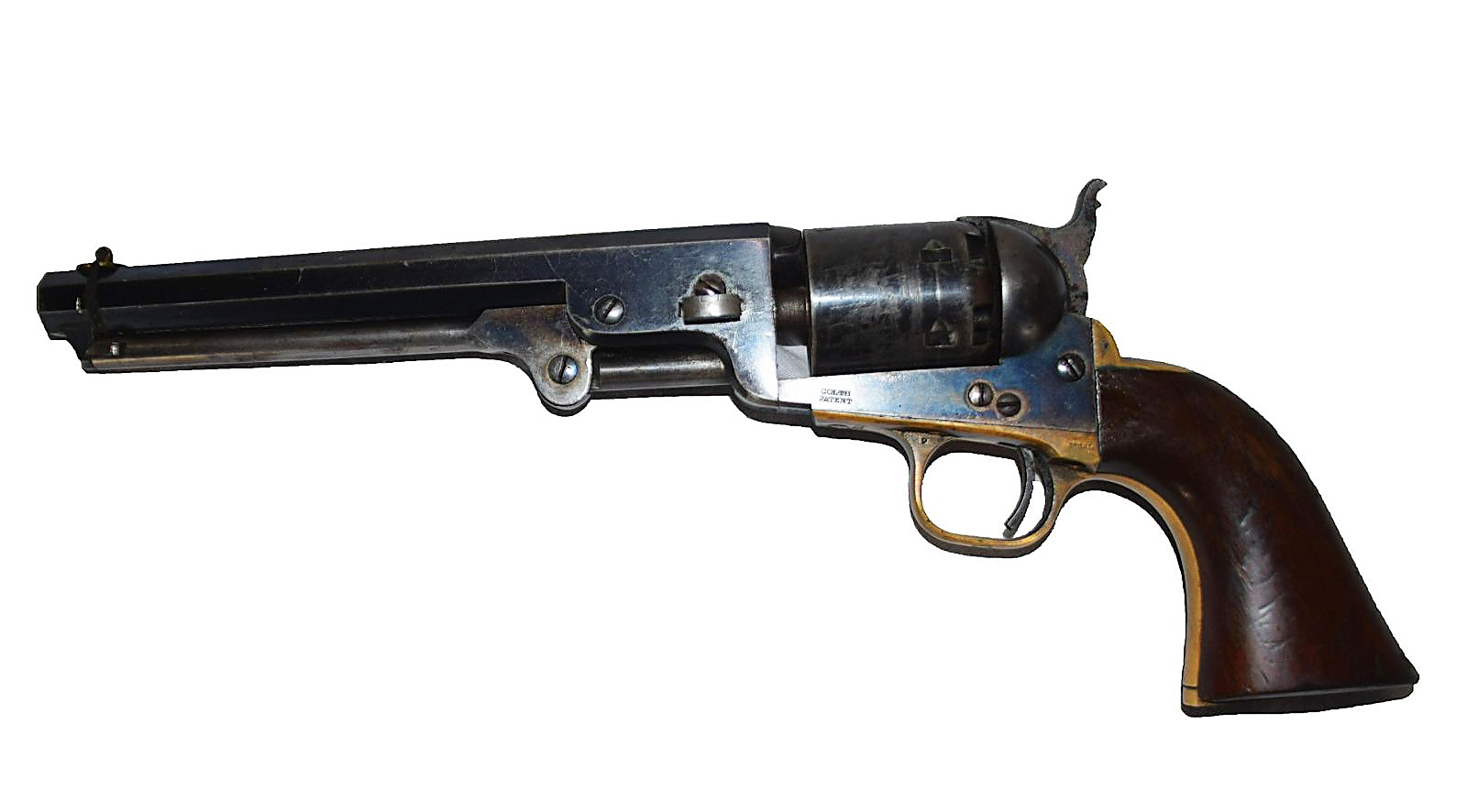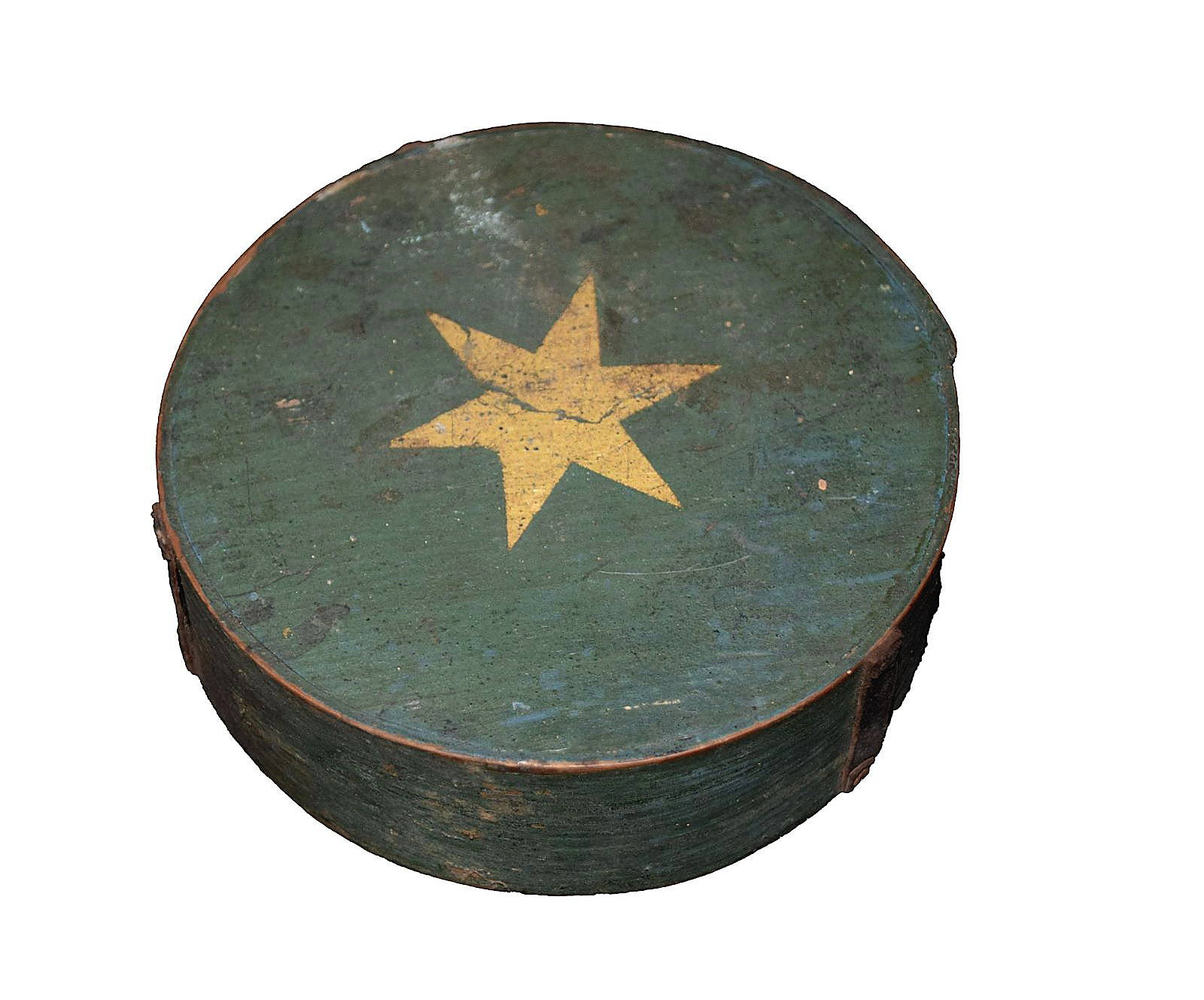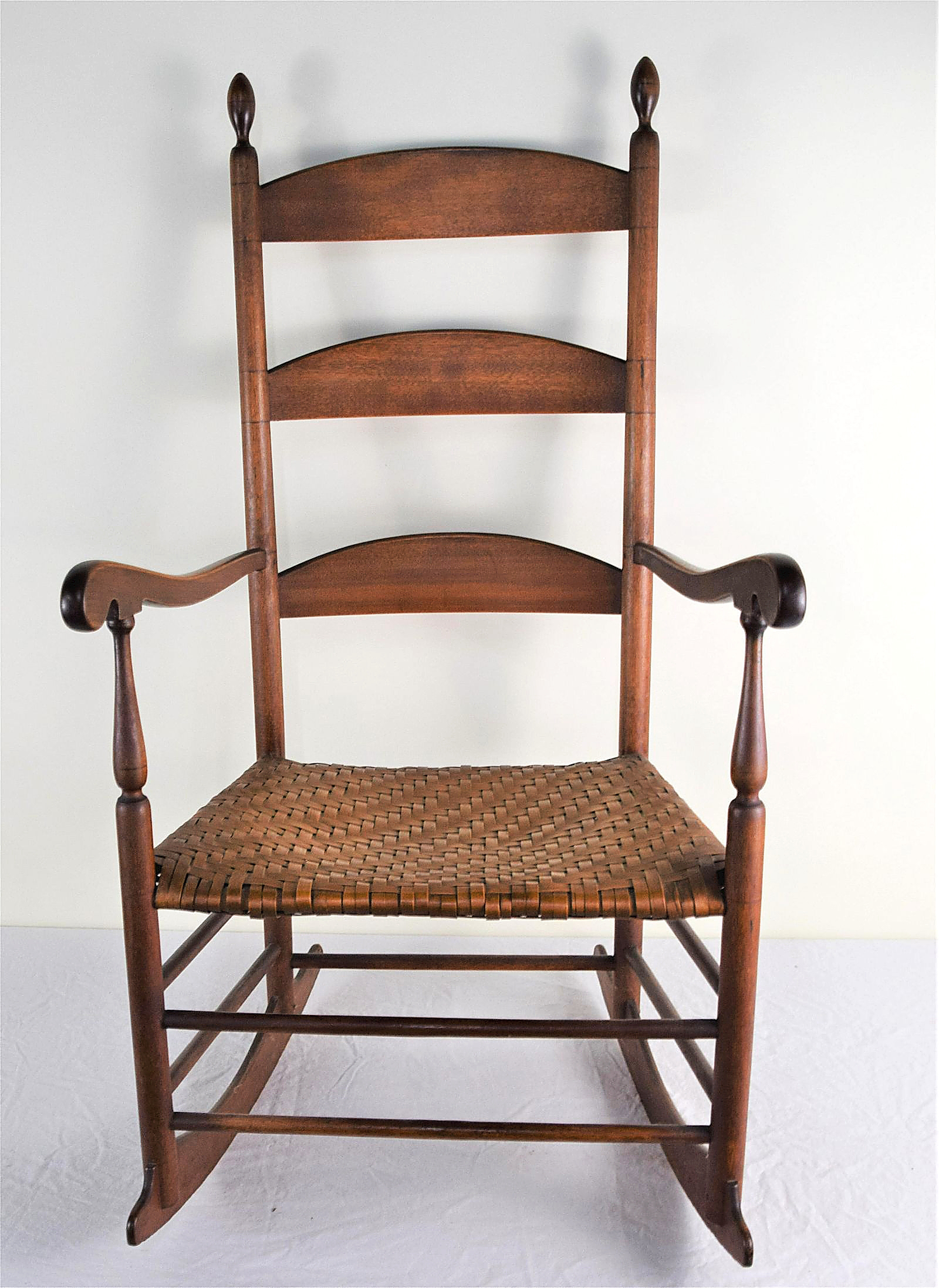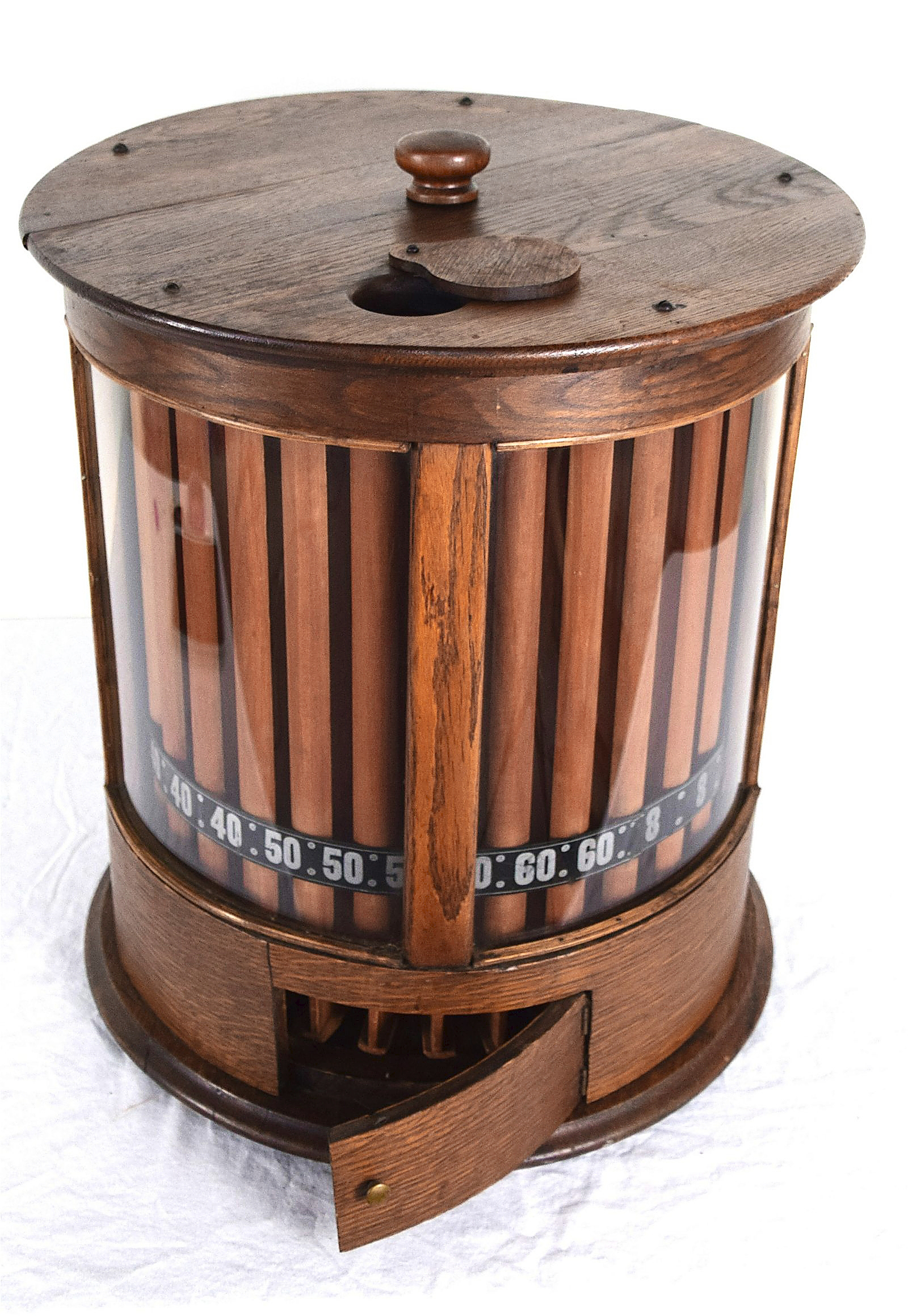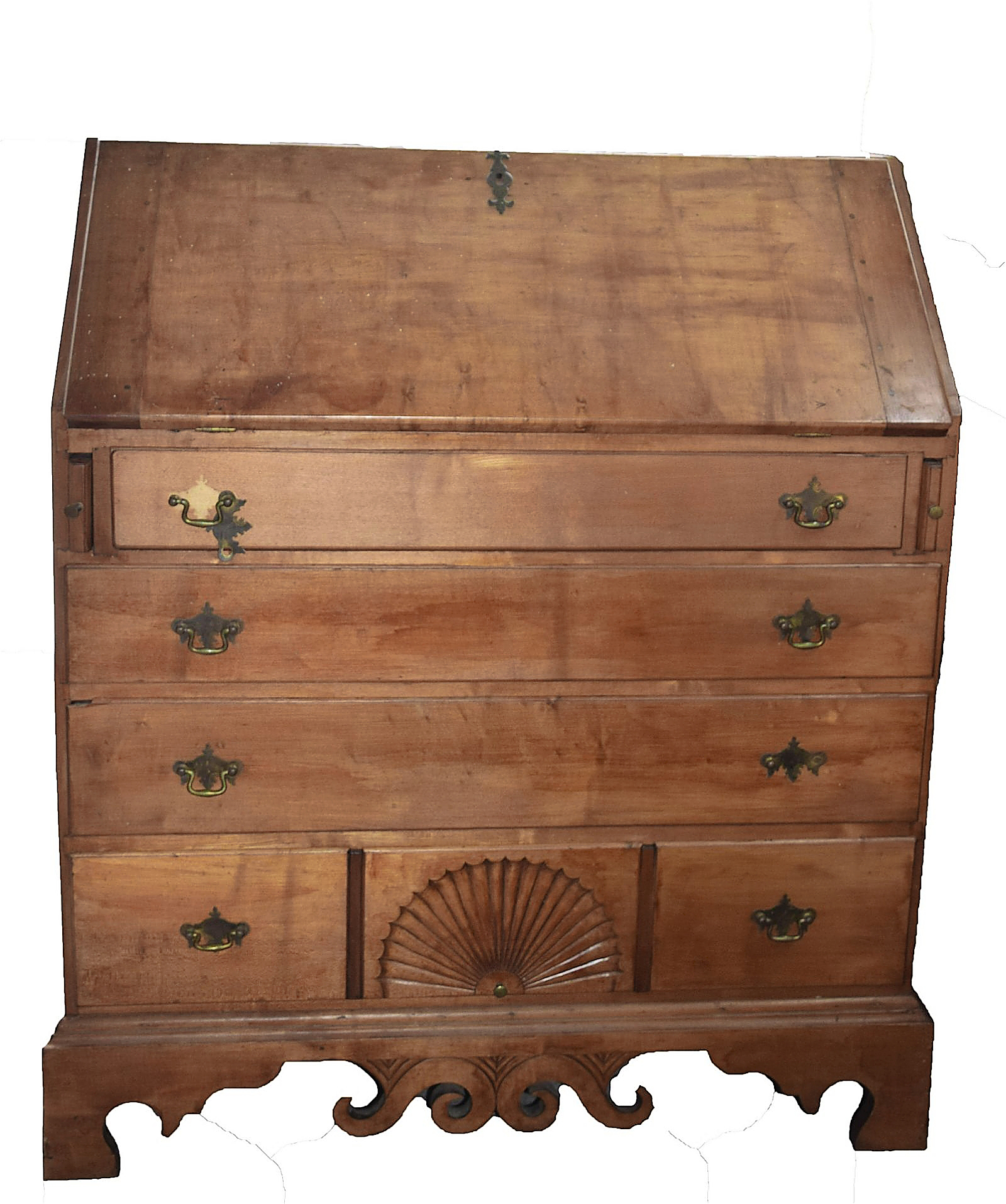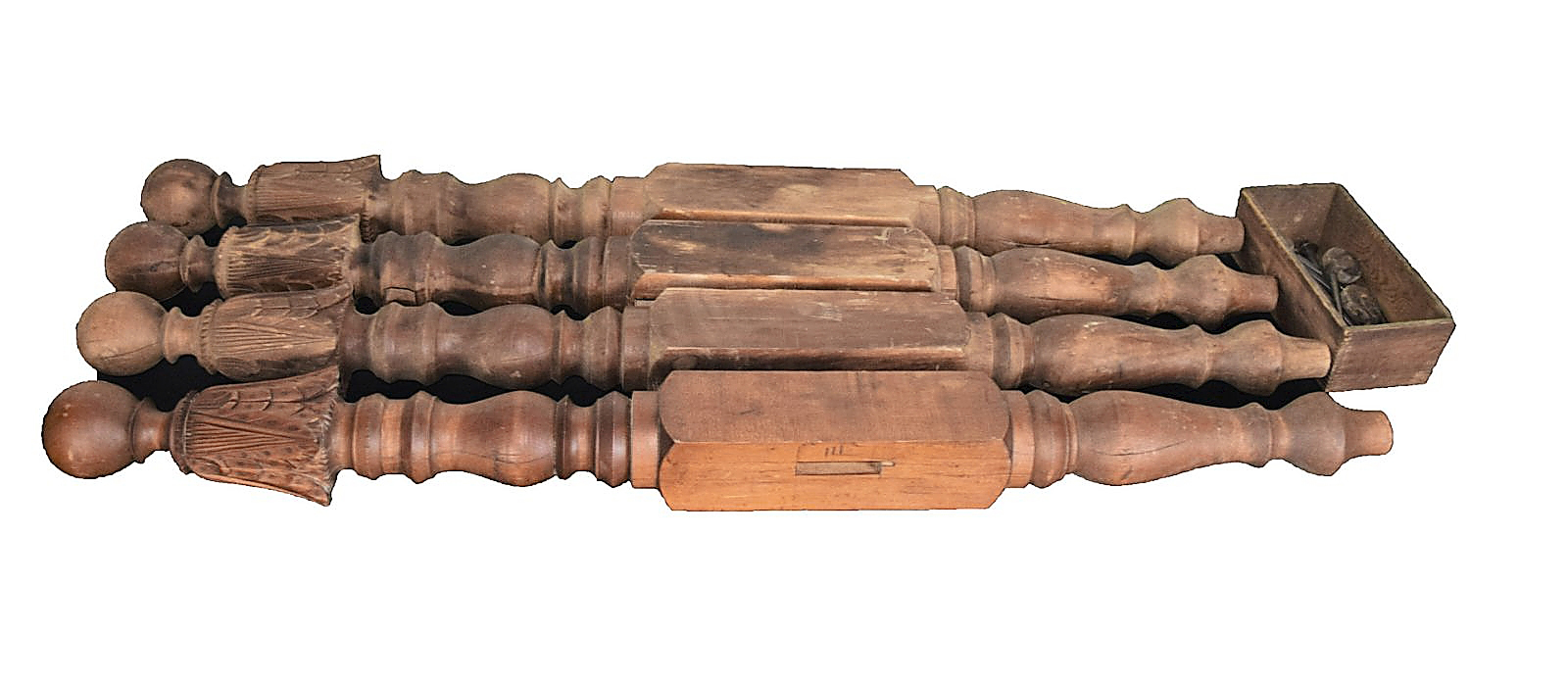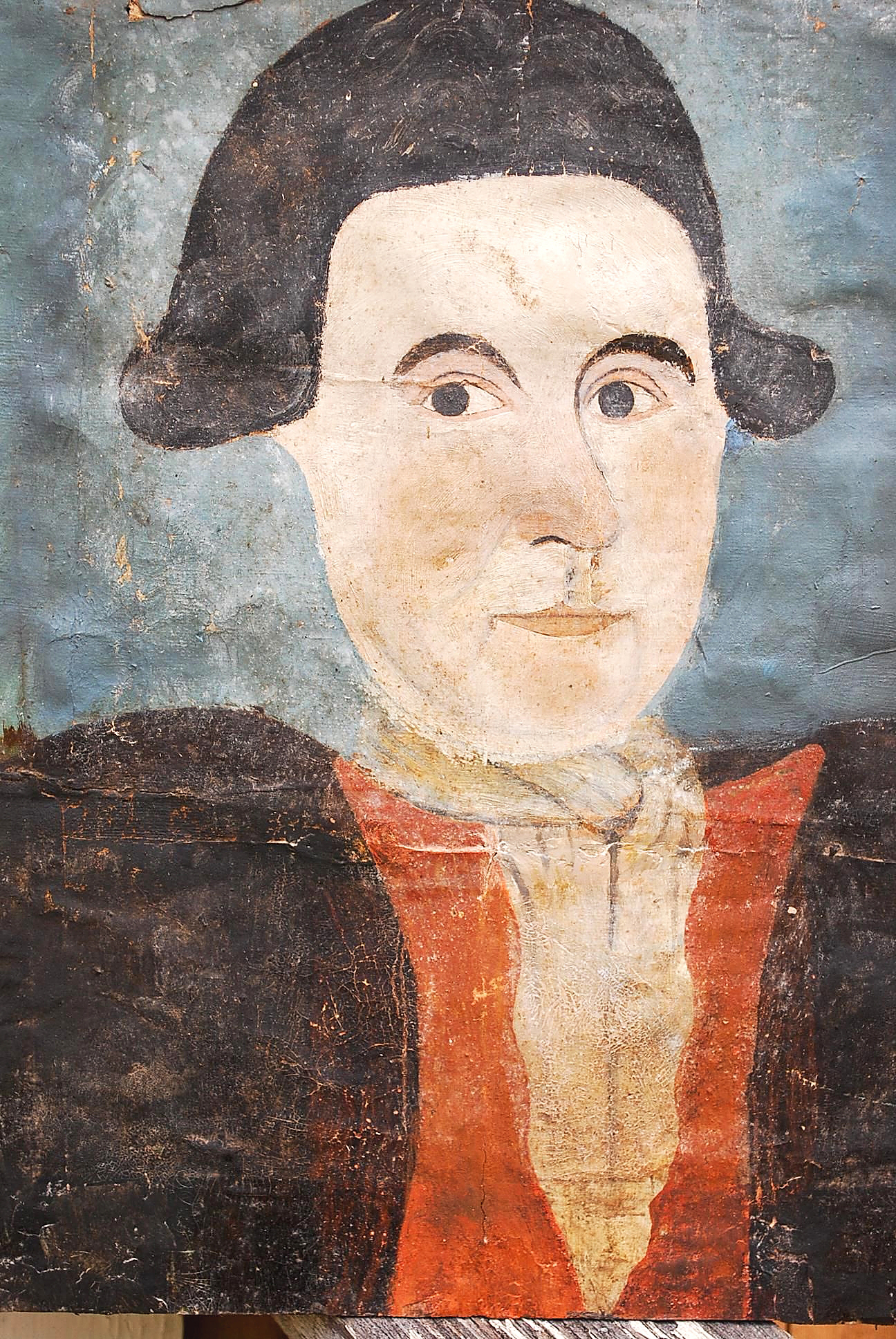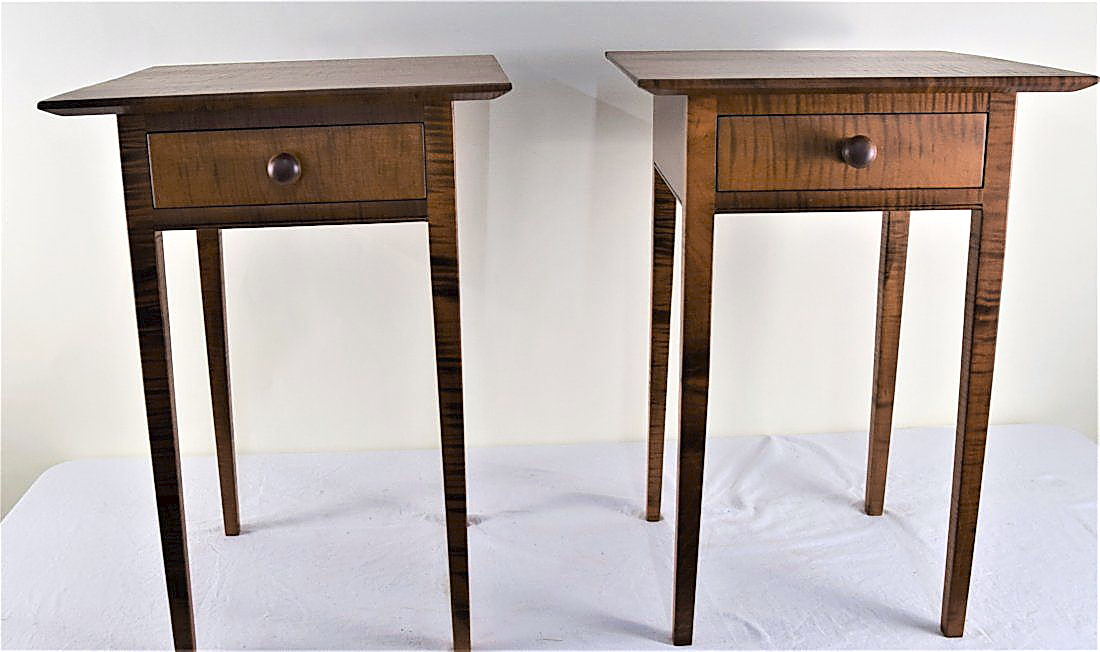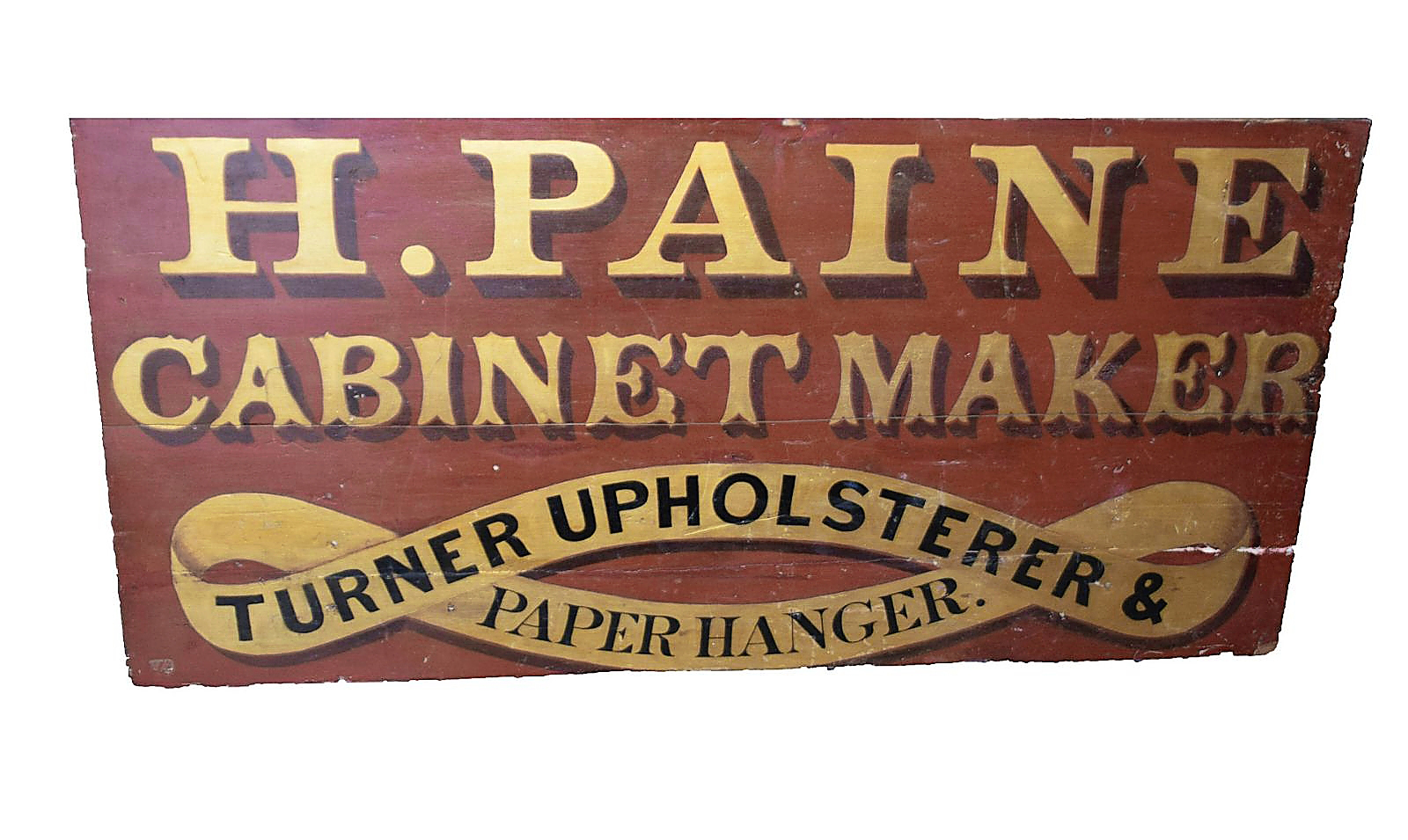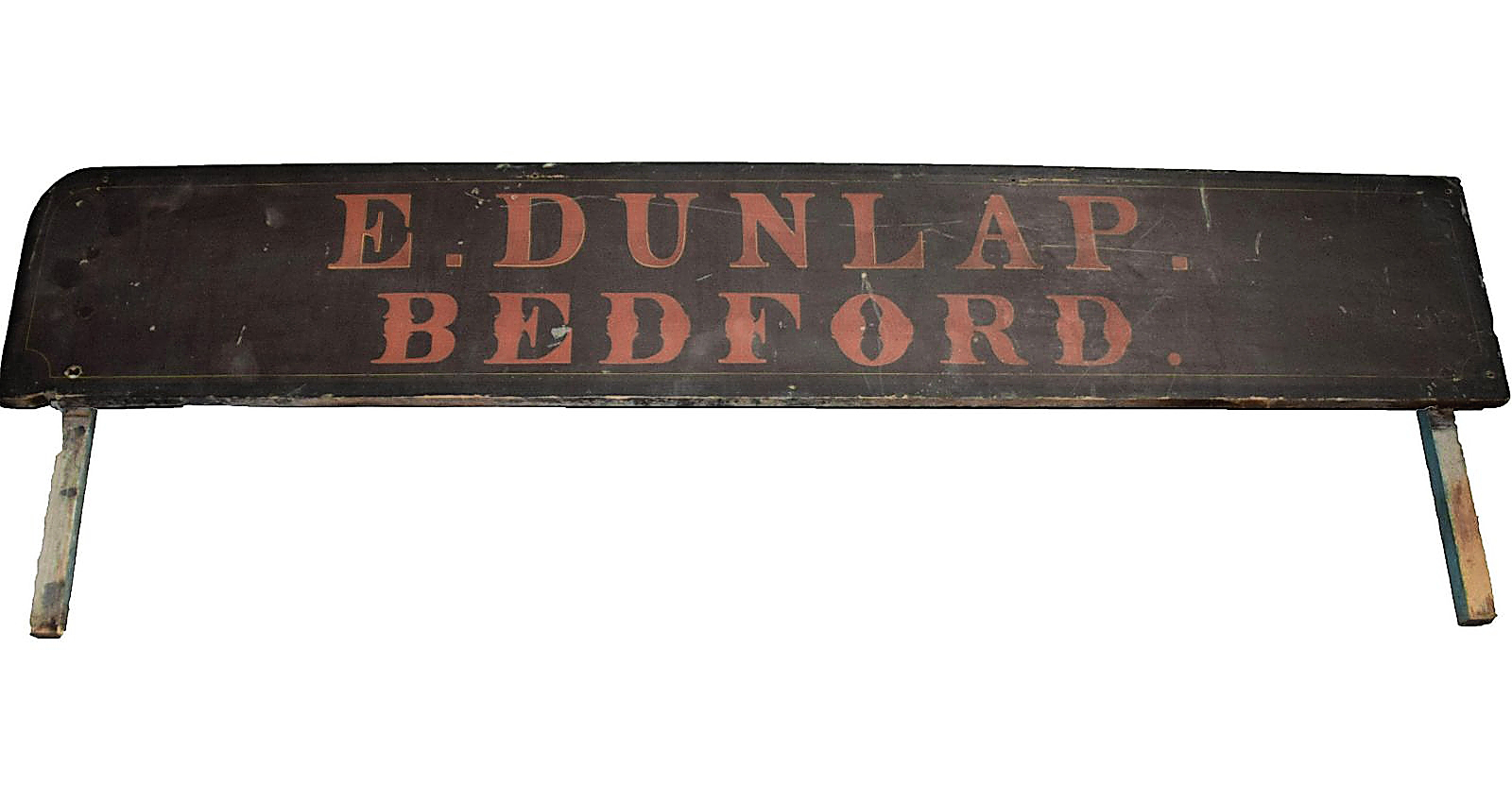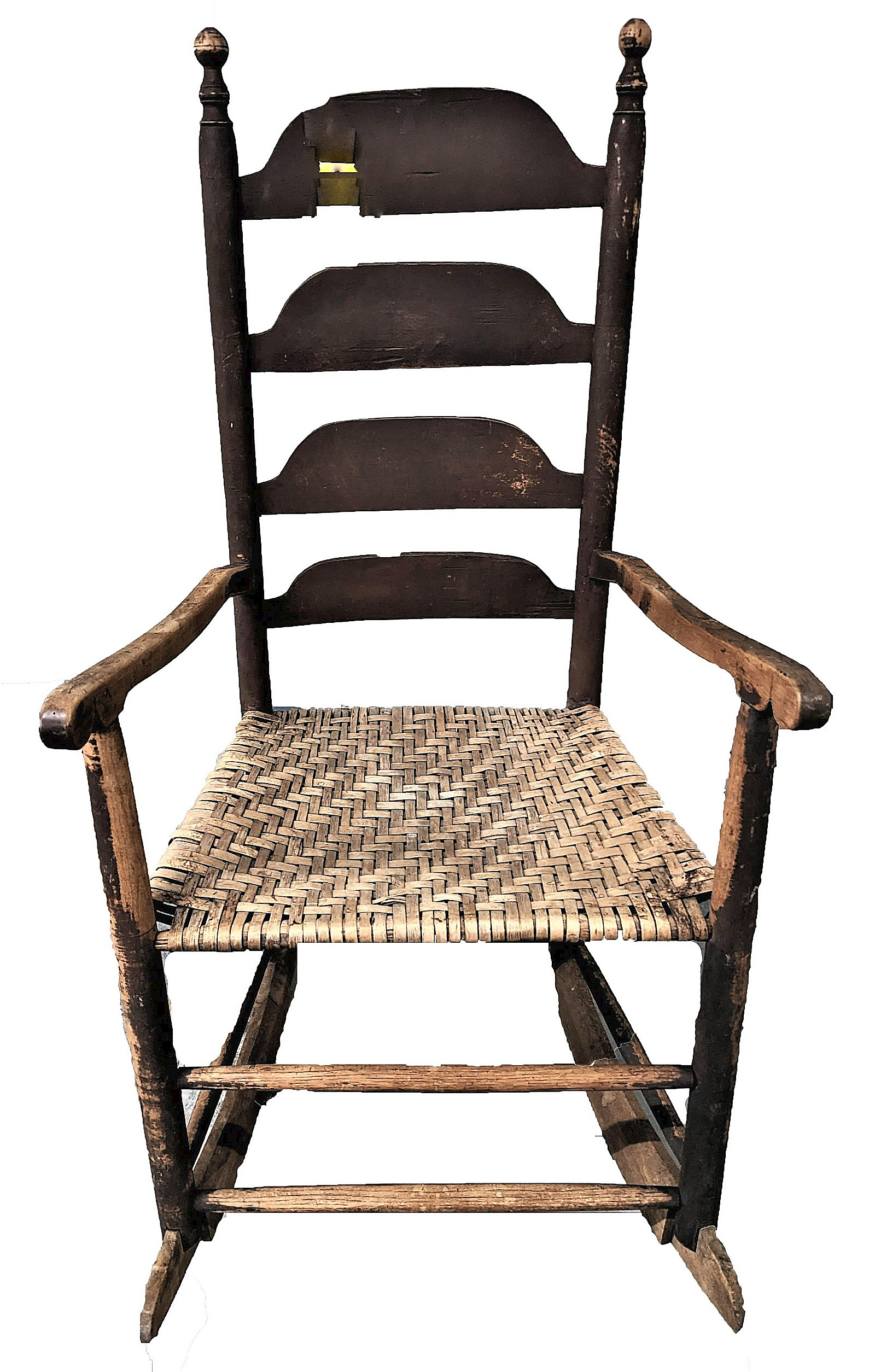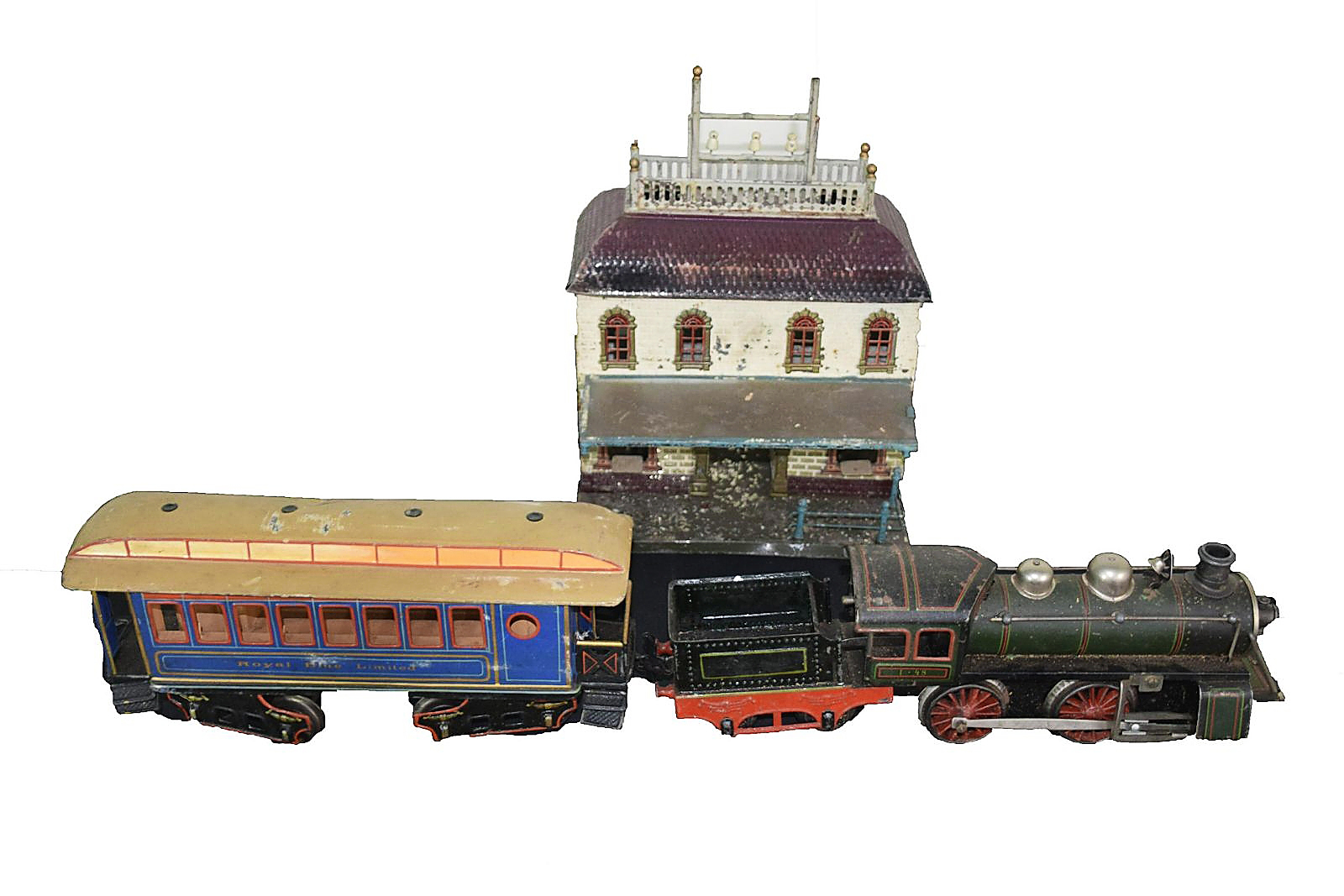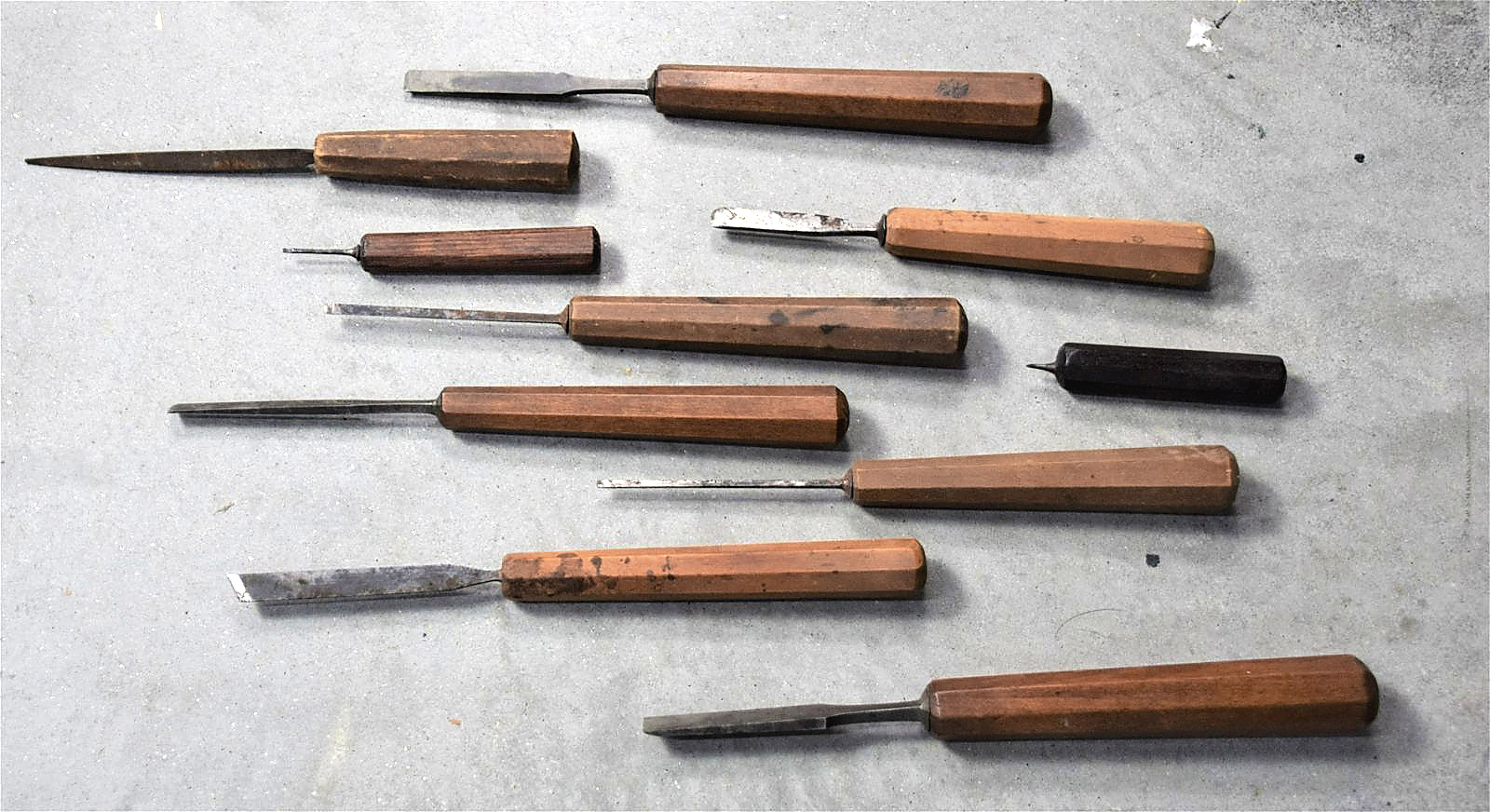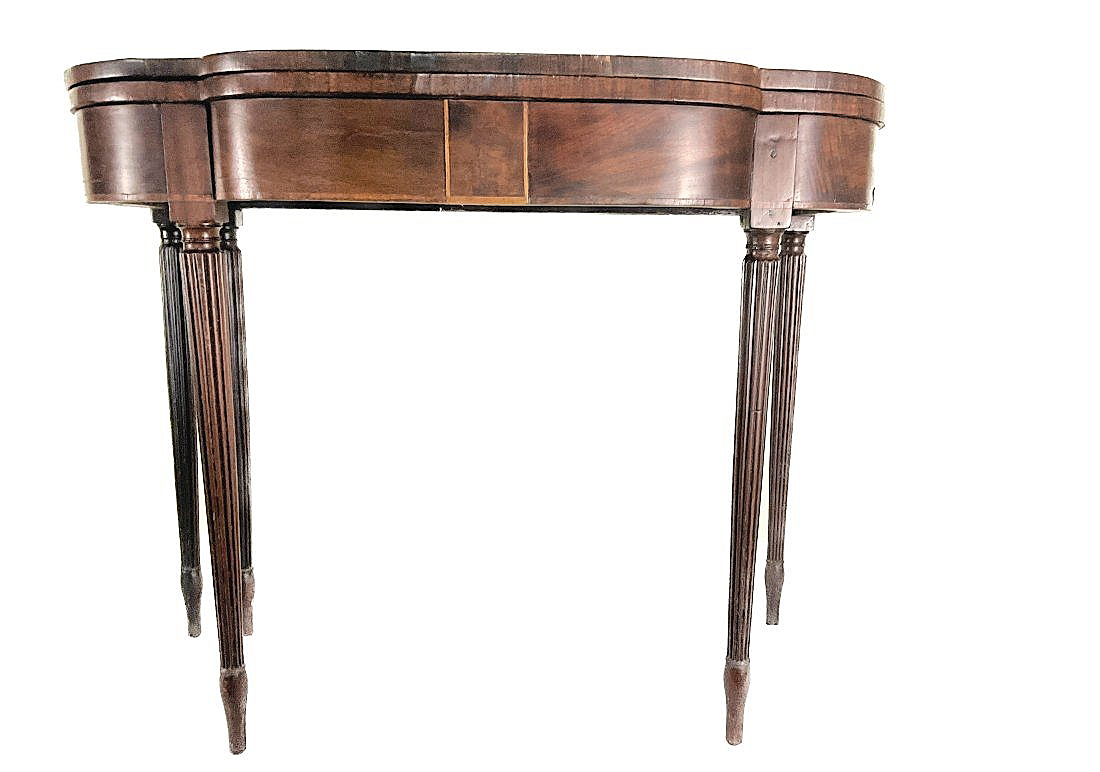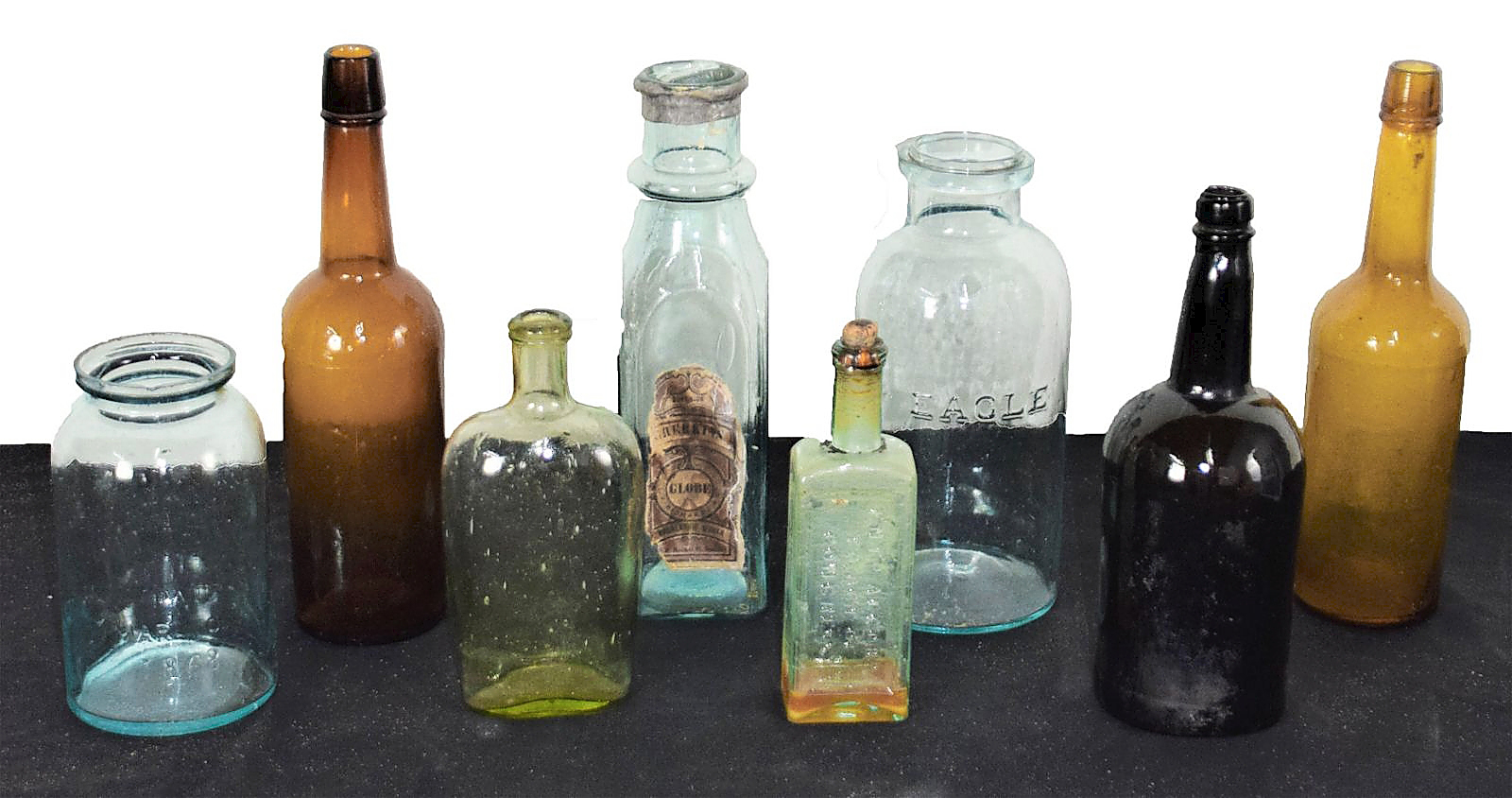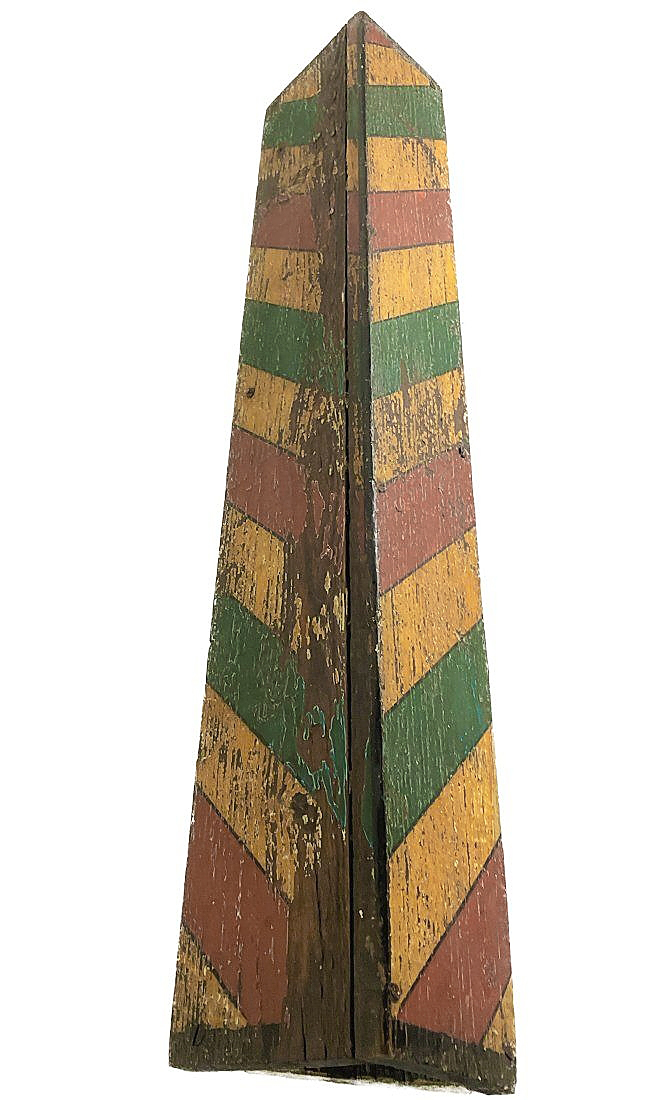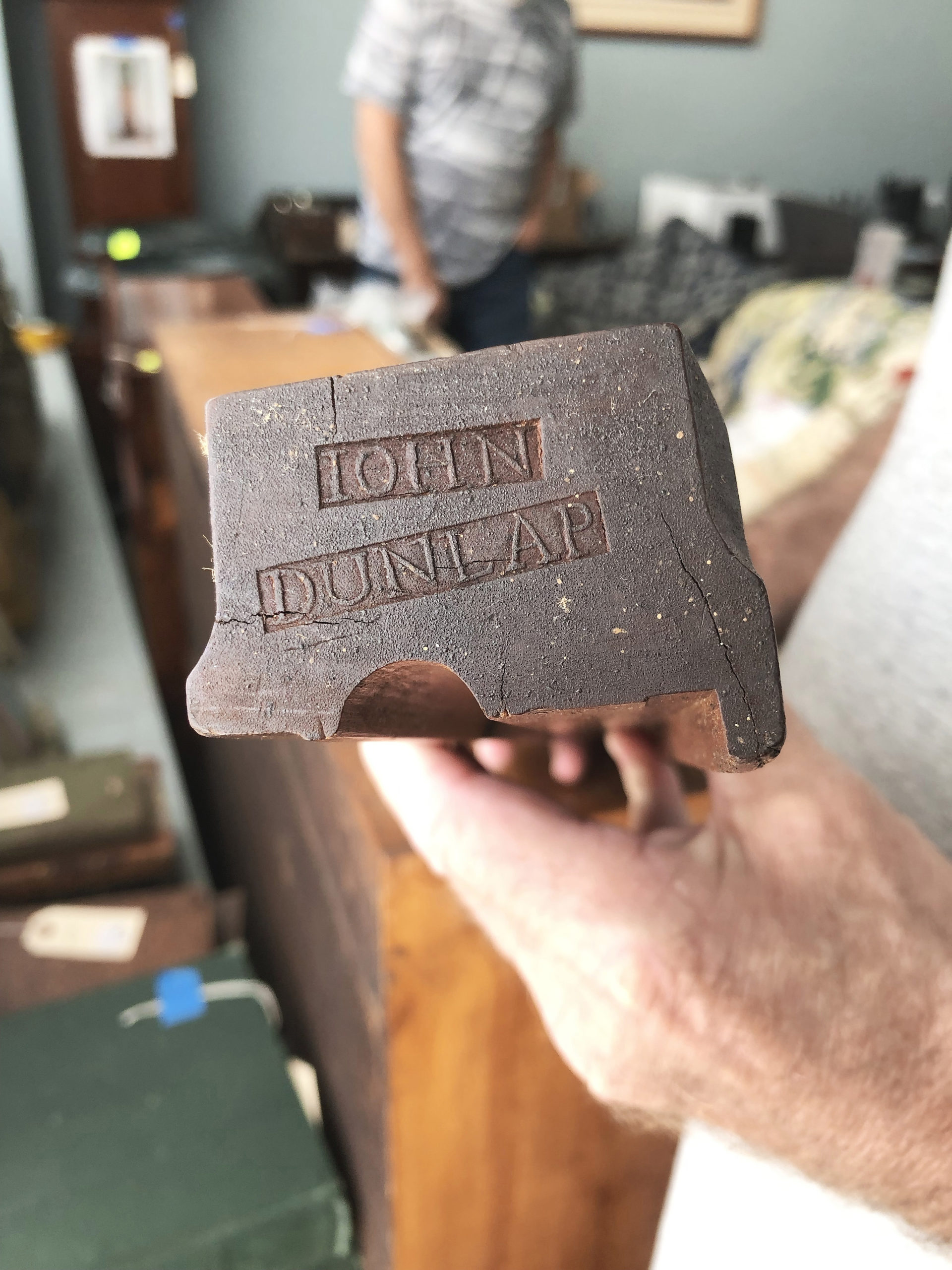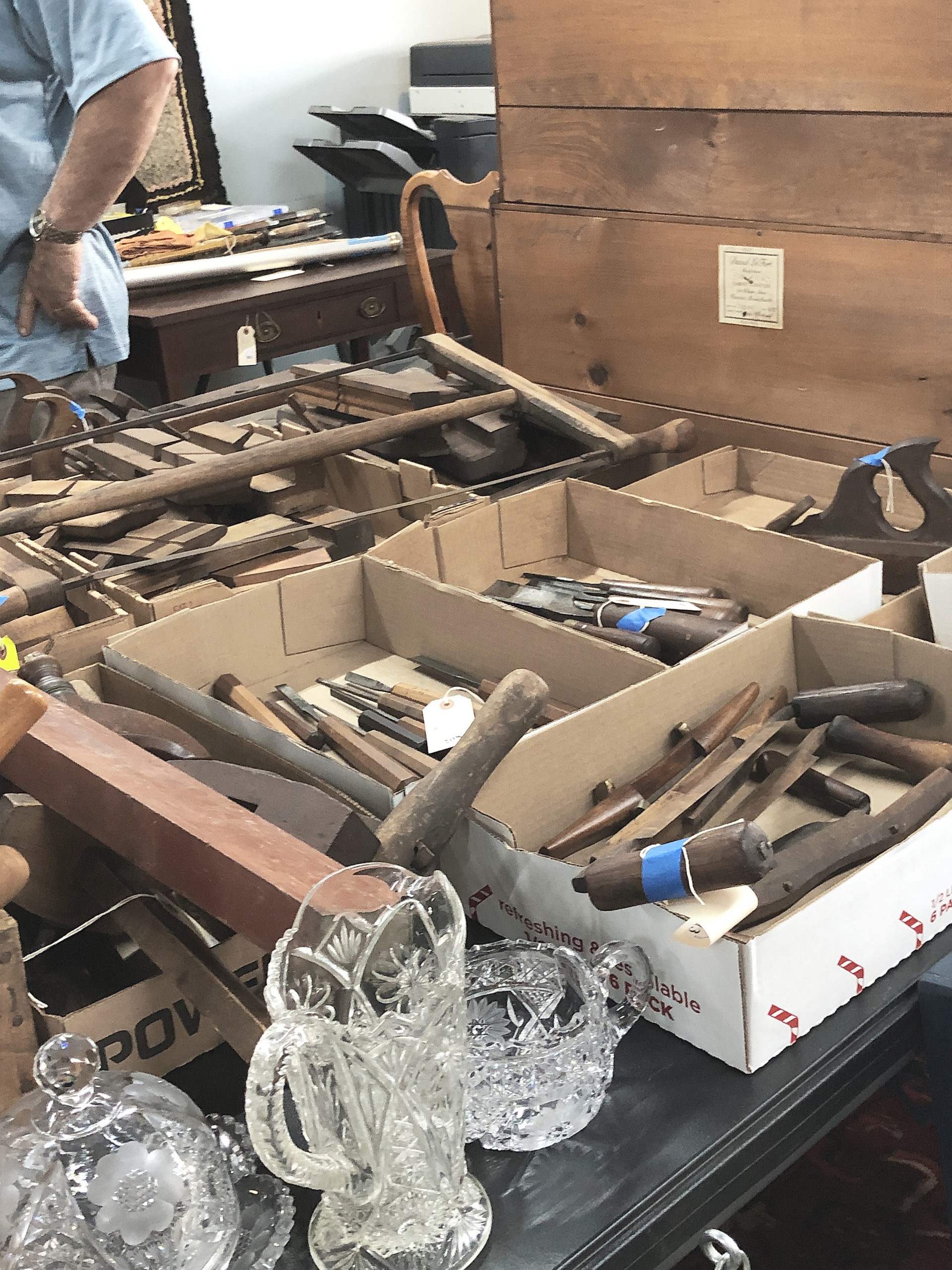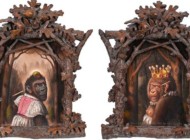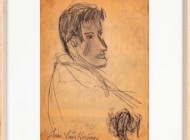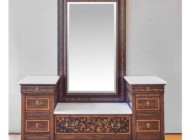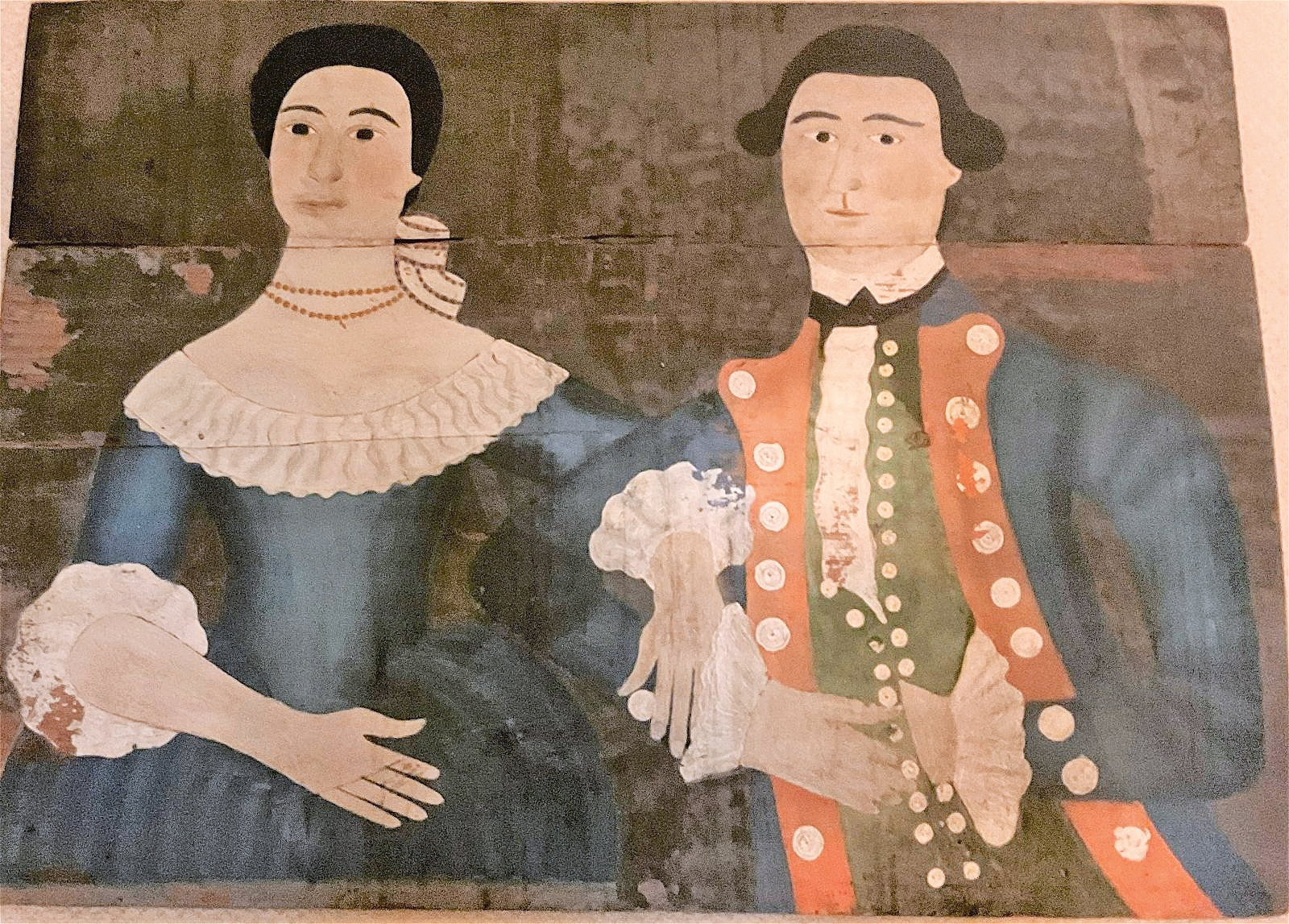
This outstanding double portrait of John and Martha Dunlap was bought by folk art dealer David Schorsch, who paid $51,000 for it; he was underbid by the New Hampshire Historical Society. It was the top lot of the sale.
Review & Onsite Photos By Rick Russack; Photos Courtesy New Hampshire Auctions & Appraisals
GOFFSTOWN, N.H. — While this is a tale of an auction, it’s a much bigger story. Formerly in partnership with Withington Auction, Mike Reopel, Gary Yeaton and Ken Labnon decided it made more sense to expand on their own. And so, New Hampshire Auctions and Appraisals LLC came into existence with Reopel, Yeaton and Labnon as partners. They conducted their first sale on July 28, with a selection of items from the Bedford, N.H., estate of Robert Dunlap, a descendant of Major John Dunlap, who is arguably New Hampshire’s premier cabinetmaker. The sale included items belonging to other family members who were also cabinetmakers. The back-story of this collection is not only interesting but is a good example of how knowledgeable and interested antiques dealers have rescued and preserved significant artifacts.
Built around 1820-30, the family home in Bedford was occupied by several generations of Dunlaps. Unoccupied for several years, the home and the contents were in poor shape, a target of trespassers and home to a variety of wildlife. Mike Reopel, himself a collector of Dunlap furniture and a former treasurer of the New Hampshire Historical Society, lives a short distance from the home and was aware of its deteriorating condition. He and the other principals of New Hampshire Auctions sought out the remaining family members and their attorney. They asked for, and received, permission to go through the house and salvage what they could. Six pieces of Dunlap furniture, large amounts of letters, notebooks, ledgers, paint recipes and more were given to the New Hampshire Historical Society (NHHS), which is a major repository of Dunlap furniture and documentary material. It was decided that a good portion of the contents would be sold at this auction; the three top prices of the sale were Dunlap items.
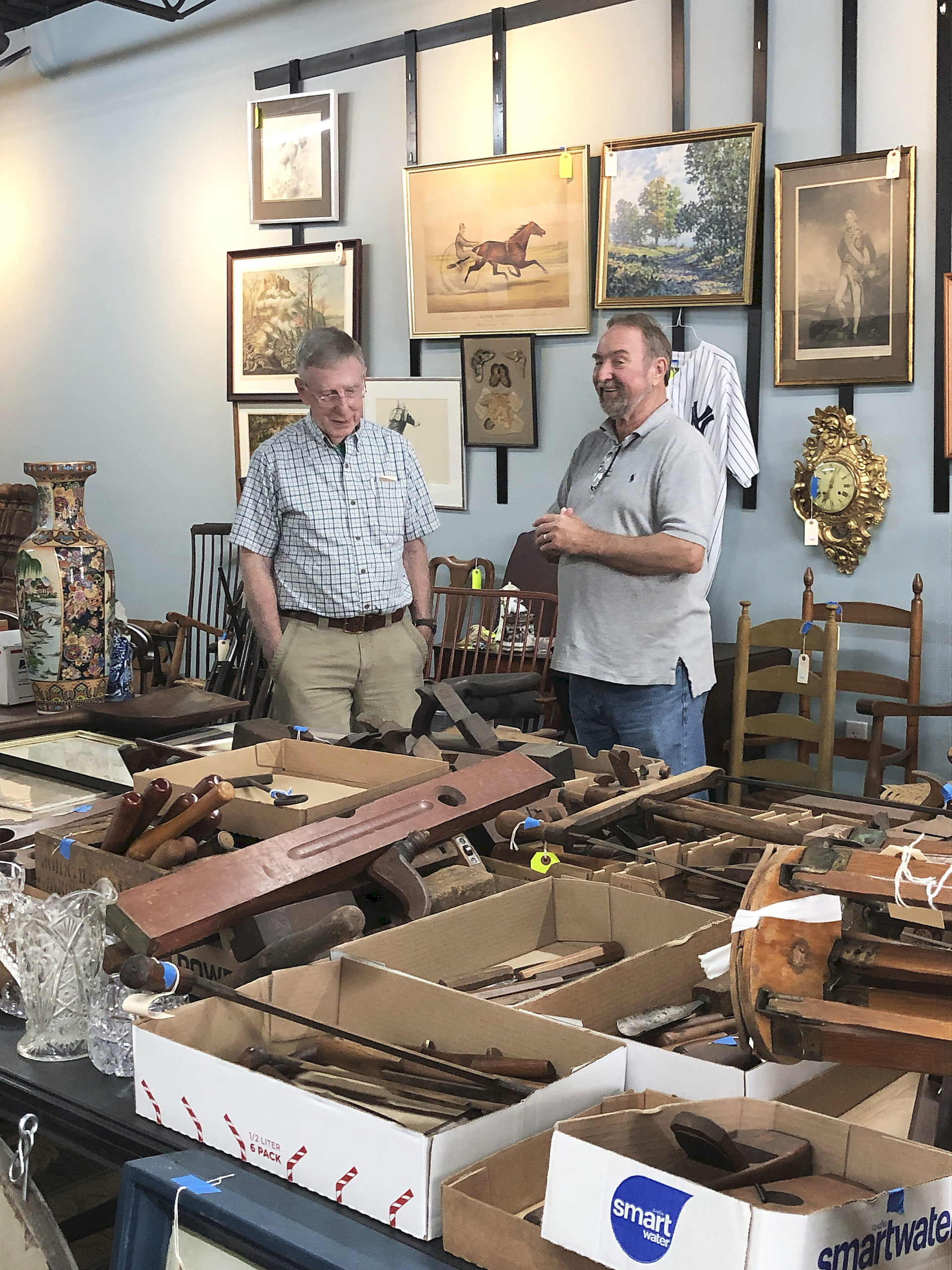
From left, Dave Hodgen, a friend and collector of Dunlap furniture, and Gary Yeaton, went through the attic and barn of the Dunlap house in Bedford, finding treasures.
An important early folk art portrait of Major John Dunlap and his wife, Martha, painted on boards, was the highlight of the Dunlap items and the sale. Dunlap was a major in the Ninth New Hampshire Militia and is shown wearing his uniform. The unit fought during the Saratoga campaign in 1777 which resulted in the surrender of British General Burgoyne. The unit also served in the French and Indian war. The double portrait had never been offered for sale before this auction. Woodbury, Conn., folk art dealer David Schorsch paid $51,000 for it, and after the sale commented, “It’s a wonderful, very early painting and a significant piece of New Hampshire history. Who painted it isn’t known but it was obviously an unschooled artist. He incised the outline of the painting on the boards with some kind of a sharp instrument and then filled it in. The result is a very flat, and I think, a rarified example of the earliest American folk art paintings. The fact that it descended in the Dunlap family and remained in the home all these years, makes it safe to say that it represents John Dunlap and his wife at a very early time. I’m delighted to have bought it. Finding and saving pieces like this is what the antiques business is all about; there are still unique things to be found.”
The NHHS was the underbidder for the painting. Yeaton discussed with Antiques and The Arts Weekly the circumstances of finding this painting, and the single portrait of John Dunlap, in the home. “Dave Hodgen [a collector of Dunlap furniture] and I were up in the attic, which was in pretty tough shape, and I found the lower portion of this painting, face down, in one corner. I hoped the other part was somewhere and we really spent time looking for it. We found it between two of the roof joists. Made for a great day. And in the barn, between two windows, we found the single portrait.”
One of the other top three prices of the sale was realized by a yellow birch molding plane that had belonged to John Dunlap and was clearly identified as such. It lacked the iron blade but sold for $18,000 to the NHHS. The last of the top three items, which also went to the NHHS, was the single primitive portrait on canvas of John Dunlap, which earned $9,600. It is known to have been accompanied by a matching single portrait of Martha but the current whereabouts of that painting are not known. According to Roepel, the pair was shown together in a video posted online several years ago, probably by someone who had broken into the house.
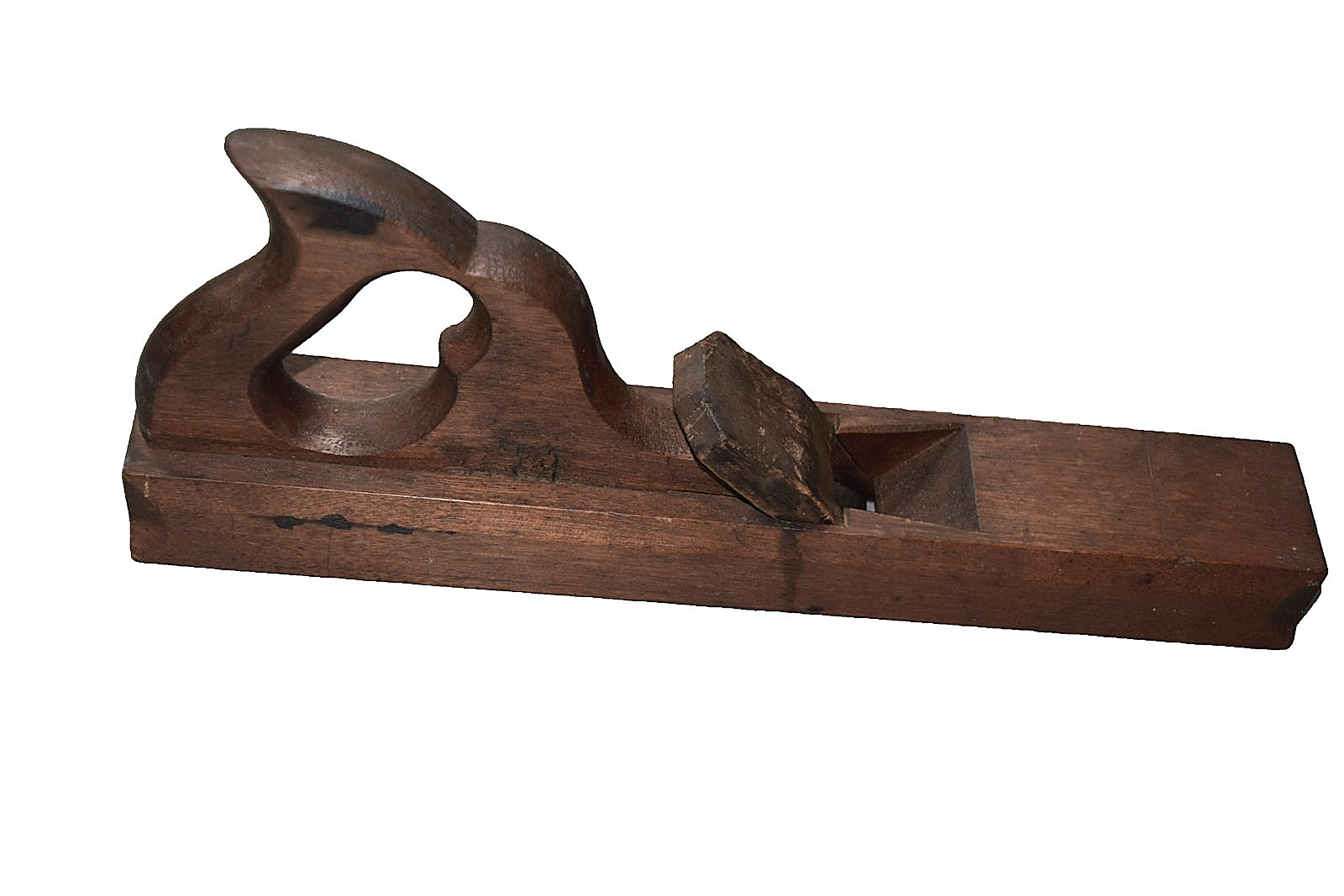
One of the stars of the sale, earning the second highest price of the Dunlap collection, was this Eighteenth Century molding plane that had belonged to John Dunlap. It was one of those objects two bidders really wanted but the New Hampshire Historical Society stayed with it until they got it, for $18,000.
There were several pieces of furniture made by other members of the Dunlap family. Many had been pictured in The Dunlaps and Their Furniture by Charles Parson; it’s the essential primary book on the Dunlaps and was published in 1970 by the Currier Gallery of Art. A circa 1830 rocker, also depicted in that book, sold for $1,920. An Eighteenth Century Chippendale maple slant-front desk, illustrated in the same publication and attributed to Robert Dunlap, son of John Dunlap, brought $1,320. A circa 1820 carved bed, also made by Robert, brought $1,080. A circa 1830 rocking chair, similar to one pictured in the book reached $540. There were also several lots of woodworking tools in addition to the molding plane mentioned above.
In addition to items from the Dunlap estate, the sale included a rare Shaker rocking chair, a collection of trade signs, baseball memorabilia, sporting photographs, Eighteenth and Nineteenth Century furniture, fishing lures and more. The Enfield Shaker rocking chair with arms and three back splats earned $9,600. The buyer, who asked not to be identified, commented, “There’s very little furniture that was made at Enfield. Most came from Mount Lebanon and some from Canterbury, but Enfield pieces are really scarce.”
The trade signs included several that had been used at Colonial Williamsburg. Earning $1,320 was a double sided wooden “Colonial Williamsburg Craft House” sign, with its iron bracket. It depicted the Williamsburg Kittinger furniture insignia and had hung at the corner of the Duke of Gloucester Street and South Henry Street in Merchant’s Square from 1937-2003. A carved wooden double-sided sign, which had also hung in Williamsburg at the entrance to the J.N. Greenhow tavern, sold for $1,080.
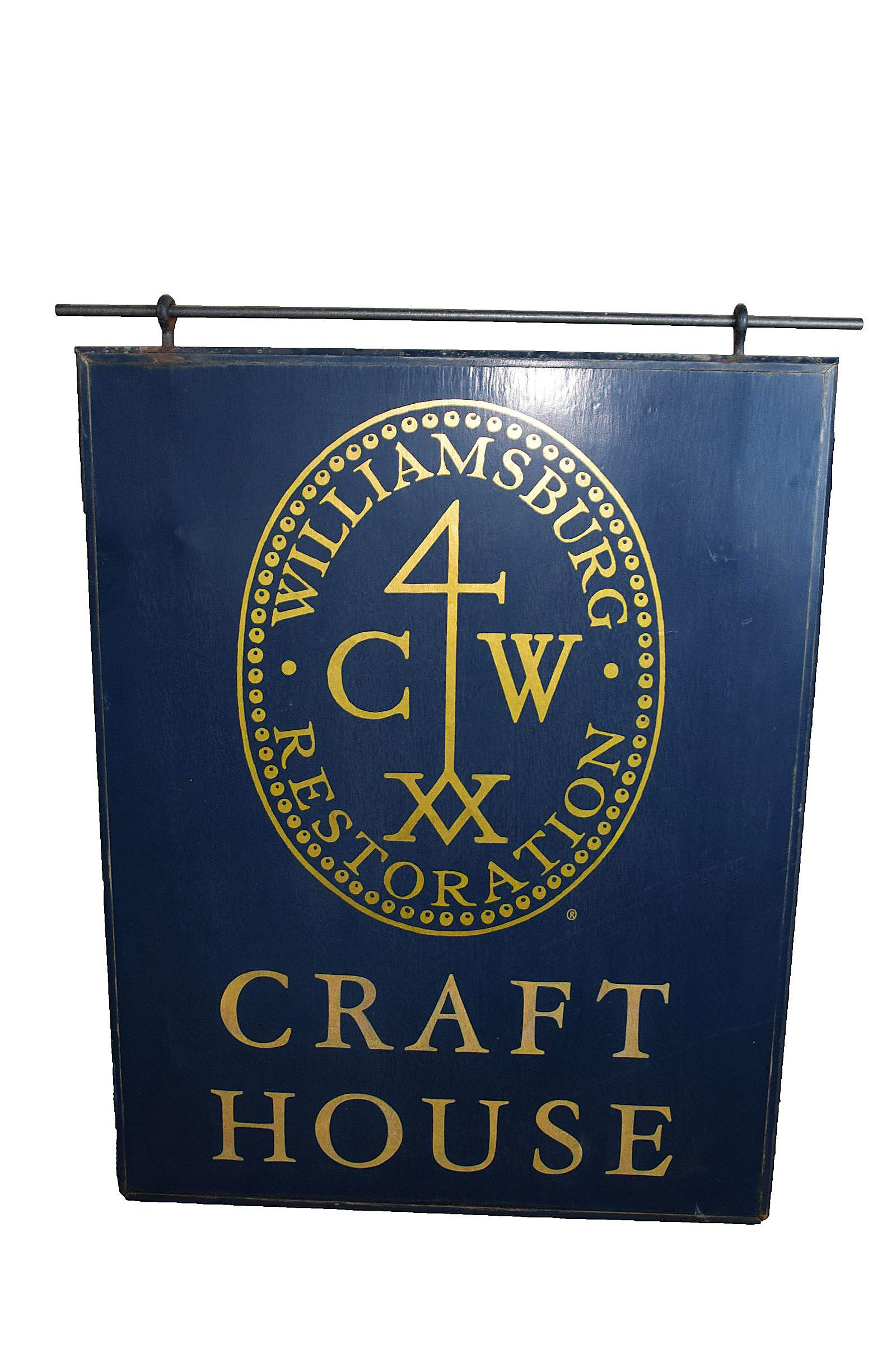
The auction included several signs that had been used in Colonial Williamsburg. From 1937-2003, this “Craft House” sign hung at the corner of the Duke of Gloucester and South Henry streets in Merchant’s Square. It was the highest priced sign of the group, which bidders lifted to $1,320.
The sluggishness in the “brown” furniture category was unfortunately evident. A Nineteenth Century New Hampshire tapered leg side table brought $60; an Eighteenth Century maple Queen Anne side chair with splat back, bulbous turnings on the front stretcher and Spanish feet went out for $60; and two country one-drawer stands, one Hepplewhite and the other Sheraton, sold together for $144.
There were several lots of sporting photographs along with original artwork by Robert Riger, a well-known photographer and illustrator of sporting subject matter; much of his work had been published in Sports Illustrated magazine. Two photo albums with about 30 black and white photos of football players and games, mostly taken between 1955 and 1962, sold for $390. Four of Riger’s original drawings of the Cleveland Brown’s Hall of Fame fullback Jim Brown, which were published in the September 26, 1960, issue of Sports Illustrated magazine sold for $192. They appeared in the article “How I play Fullback.”
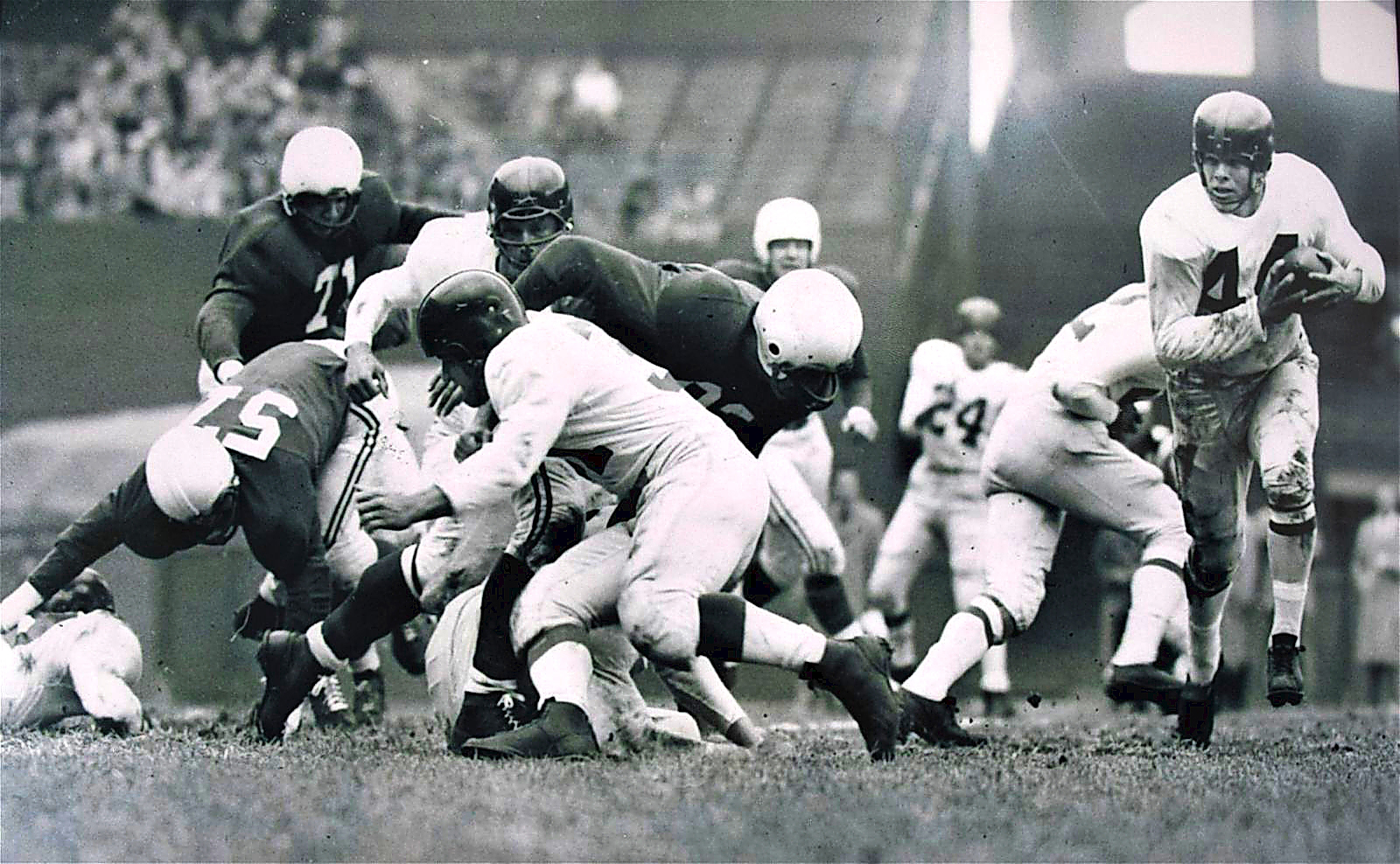
Two albums with approximately 30 football photographs, taken between 1955 and 1962, earned $390. They were taken by photographer and illustrator Robert Riger, whose work appeared in publications such as Sports Illustrated.
After the sale, Mike Reopel said, “I’m really proud that we were able to save this material. It’s not only significant as a part of New Hampshire history, it’s an important chapter in the history of Eighteenth Century American furniture. A lot of important material, including six pieces of furniture, ledgers, paint recipes and more have been given to the NH Historical Society and they bought other pieces at the auction. The auction had some other great stuff, including the rare Enfield Shaker rocker and we grossed about $170,000. We’re all pleased with that. I’d also encourage dealers and collectors to be on the lookout for the single portrait of Martha Dunlap, which was a mate to the single portrait of him. A video exists documenting that the pair of portraits were in the house as recently as a few years ago, but it has since been stolen.”
For more information, 603-731-9876, 603-491-2635 or www.nhauctionsandappraisals.com.

